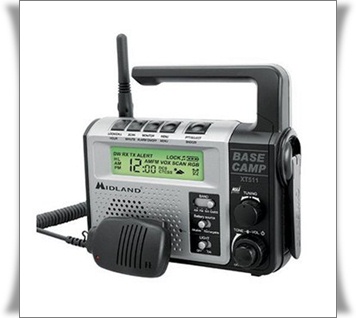Survival Radio
A survival radio is a vital part of a survival kit in emergency situations. A recognized problem when disaster strikes, is connectedness, otherwise you feel lost and alone, have no information and do not know what is happening. In such an event, if you have a radio that works in all kinds of conditions, it can prove to be a life support.

End of the world rumors may be unfounded, but one never knows when natural disasters strike, and these happen often enough. Hurricanes, storms, fires, earthquakes, tsunamis and others create emergencies for the survivors because of the loss of homes, electricity, clothes, food, water and other necessities as well as modern conveniences. This trauma can have a devastating effect if a person is not prepared for disaster survival.
Even if you have solar or kinetic powered chargers for your mobile devices, if the network is down, these will not work. In addition, if networks are still working, lines will be overloaded and you may still lose all communication. If your mobile phone network is still working, you may be able to send text messages even if you cannot reach a person. However, this is not only a one-way communication, but you may not know if the message has reached its intended receiver.
Features of a Survival Radio
Radios, which can help you in emergency conditions, are different from your normal run-of-the-mill radios in these ways:
- Battery life – You need long running battery life in a survival radio. If you have battery back up via solar power or hand-cranked radios, this will help a great deal, if batteries run out or are drained and you do not have sufficient spares or the spares also do not have much power. If your radio does not have these in-built, you can get separate chargers.
- More bands – The more bands in your survival radio, the better the chances of your being able to catch some station. The radio should catch AM/FM, shortwave and weather stations in the very least. Shortwave is important because if feeds in your area go down, you can catch stations from different parts of the world.
- Durability – The radio must be strong, durable, rugged, waterproof and yet lightweight. It should be easy to carry, keep and not stop working if it is exposed to the elements.
- Lights – Having a radio with in-built lights is of great help as LED lights take up less power and provide more illumination. Light can help you find your way or even be used as a signaling device.
- USB power – Some radios come with USB slots that can enable you to charge various devices. These can be battery drainers, so should be used only if you back-up batteries or power or you need your USB devices in an emergency.
- Antennas – An external antenna or a signal amplifier will help you catch more radio signals, which are clearer, even from long distances.
Survival Radio Types
A wide range of radios are on the market, all of them are not equally useful, but it makes sense to keep at least two different ones because you do not know what kind of survival situation you may have to face. The communication protocols of different radios are:
- GMS/FRS – These have a short range, work as pagers and communicate only for limited distances and over flat terrain without any blockages. They are relatively inexpensive and people in the same area can use them as communication devices.
- CB radios – Broadcasting over a short range and popular with truckers and people on the move, CB radios do use a lot of battery power.
- VHF – Used as marine radios by people on the sea or living in coastal areas, VHF radios can catch many channels, offer a good range and are not high power consumers.
- Ham radios – Having always proved to be great in emergencies and for saving lives, ham radios have a large broadcasting and receiving range and offer voice, text and video communication. However, these require a license to operate and these survival radios are expensive.
Many brands of radios are on the Internet among them being Midland, Eton, Grundig, First Alert and Kaito. Now you know what to look for in a survival radio and you can make your own checklist and buy a radio that fulfills your criteria.





New! Comments
Have your say about what you just read! Leave me a comment in the box below.